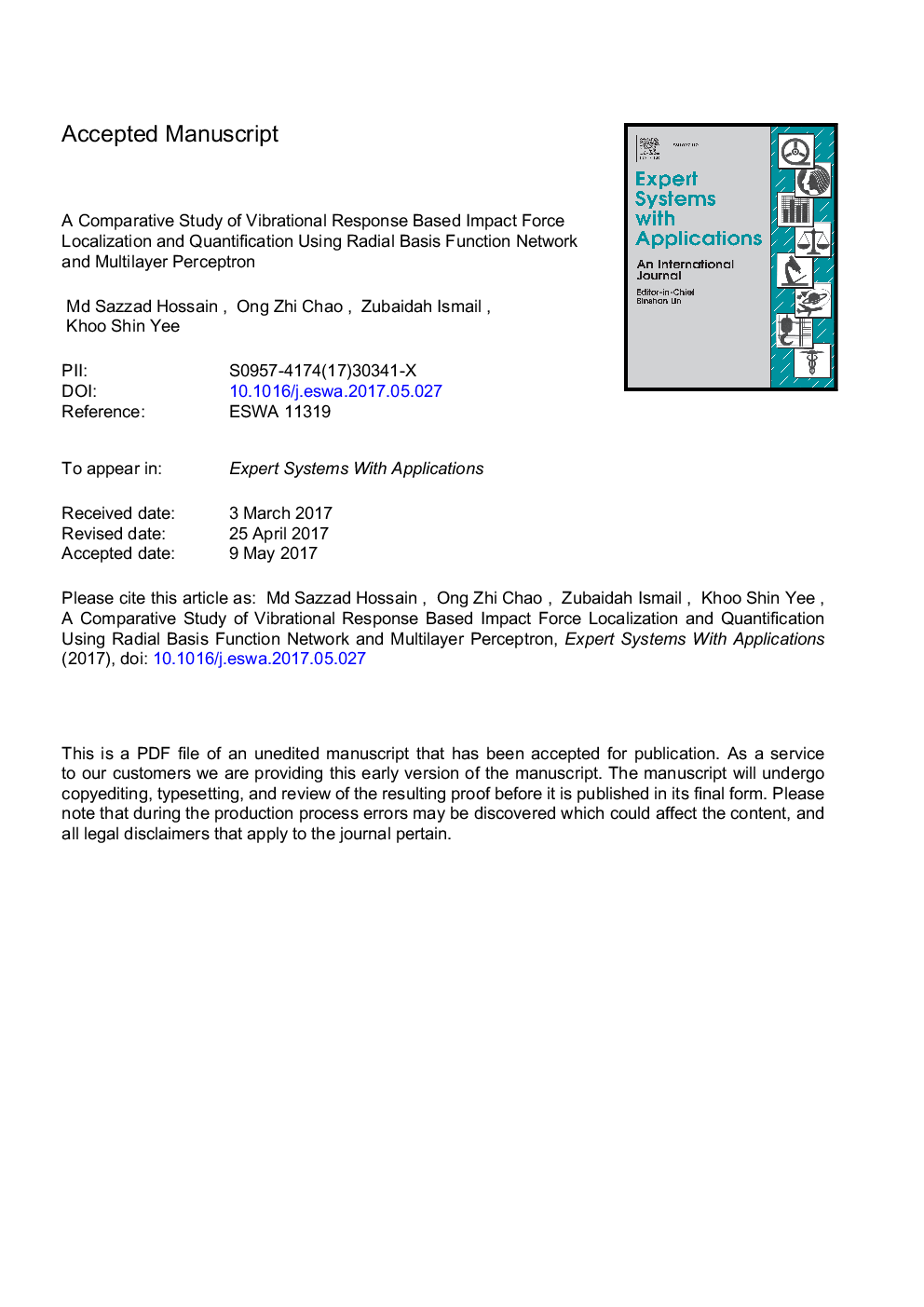| Article ID | Journal | Published Year | Pages | File Type |
|---|---|---|---|---|
| 4943140 | Expert Systems with Applications | 2017 | 40 Pages |
Abstract
Impact force identification from response sensors is important especially when force measurement using force sensor is not possible due to the installation or dynamic characteristic altering problems. For example, the bump-excited impact force acting on vehicle wheel or ship collision on an offshore structure. Among various existing impact identification approaches, neural network based force identification method has received great attention because one does not need to have a system model. Thus, it is less likely to be affected by ill-posed problem that often occurs during the inversion process. So far, previous studies focused on solving the impact force identification problem using only the conventional Multilayer Perceptron (MLP). Thus, there is a room for improvement to find an alternate algorithm that has great advantage over MLP. For this reason, this study proposes Radial Basis Function Network (RBFN) for possible further improvement in impact identification task. A comparative study between these two algorithms was conducted via experimental approach. Impact forces were made on a Perspex plate structure which was designed to produce similar dynamic behavior of a typical vehicle. Impact locations were fixed at four edges of the test rig to simulate impact events at a vehicle's wheels. Time-domain peak-to-peak and peak arrival time features were extracted from accelerometer data to use as network inputs. Few training data were taken in the way that they represent the entire range of magnitudes of all trial impacts made throughout the experiment. In overall, RBFN improved the impact localization and quantification accuracies by decreasing 32.98% and 40.91% error respectively compared to MLP. The improvement was mainly due to the RBFN's strong approximation ability and its superior tolerance to experimental noises/uncertainties.
Keywords
Related Topics
Physical Sciences and Engineering
Computer Science
Artificial Intelligence
Authors
Md Sazzad Hossain, Zhi Chao Ong, Zubaidah Ismail, Shin Yee Khoo,
